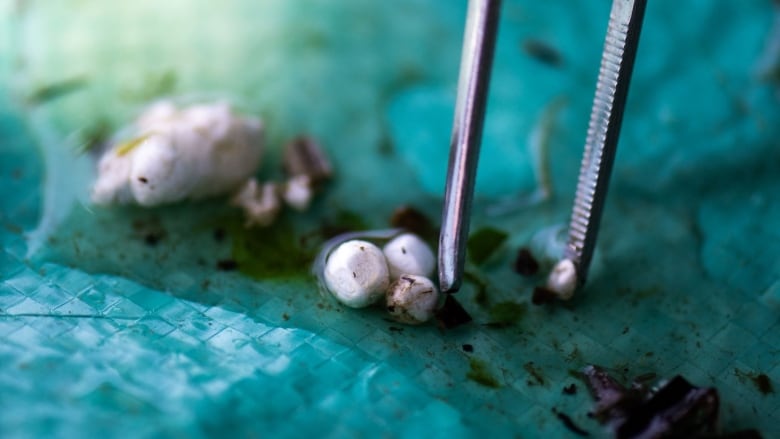Floating garbage bins help collect trash from Vancouver’s waterways | CBC News
Stationary cleaning machines called seabins are helping clear Vancouver’s False Creek of garbage, one scoop of debris at a time.
Sadie Caron of Fraser Riverkeeper, the charity behind the project, says the bins are attached to various spots around Granville Island. They skim the surface of the water 24 hours a day with the help of an electric pump to capture any sort of floating debris.
“Water is sucked in from the surface and it passes through a catch bag that is removable inside a sea bin,” Caron said.
The pump is able to displace 25,000 litres of water an hour and the bins catch the debris. Filtered water is then pumped back into the marina.
“Everything, all the debris that’s caught inside the catch bag, and the catch bag is emptied every single day. And they can catch about 3.9 kilograms of floating debris everyday,” she said.
The seabins are part of a broader plan to reduce plastic waste from entering the world’s oceans and waterways.

Plastic breaks down, but not entirely — only into progressively smaller pieces known as microplastics. These tiny plastics enter the food web through smaller important food sources like plankton and krill, where they are consumed by other animals.
An estimate from the International Union for Conservation of Nature suggests seven million tonnes of plastic enter the world’s oceans each year.
Foam, cigarettes, and plastics
Caron says the bins have caught a wide assortment of debris: disposable masks, bottles, syringes, plastic wrappers, cigarette butts, over 2,000 pieces of foam, and hundreds of small plastic pellets known as nurdles, which are typically used in plastic manufacturing.
“Anything that’s floating in the water in False Creek is collected in the bins,” she said. The waste is then sorted and sent for recycling, hazardous waste, or to the landfill.

Caron notes this is a first step in their work.
“One of the important steps, we’ve probably all heard it before, but reducing the amount of plastic waste that we consume, especially things like styrofoam which is so common in a lot of our single-use food delivery packages,” she said.
“Even the docks the seabins are attached to often have styrofoam and it breaks down into little pieces and ends up in our waterways. For things like single-use plastics, we use them once but then they live in our environment for hundreds of years.”
For all the latest Technology News Click Here

